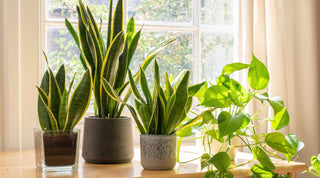Small pumpkins are not only adorable and decorative but also easy to grow in gardens of all sizes.
Whether you’re looking to add fall decor to your home, make delicious pies, or simply enjoy their unique appearance, small pumpkins are a versatile addition to any garden. In this blog post, we’ll dive into everything you need to know about growing small pumpkins, including planting tips, care, and harvesting.
Why Grow Small Pumpkins?
Small pumpkins are perfect for gardeners who have limited space but still want to enjoy the charm and benefits of growing their own pumpkins. Varieties like Baby Boo, Jack Be Little, and Sugar Pie are excellent choices for small pumpkins. They can be used for cooking, decoration, and even crafting, making them a fun and rewarding crop to grow.
Best Varieties of Small Pumpkins
When it comes to choosing the right type of small pumpkins, there are several popular varieties to consider:
-
Jack Be Little: These tiny pumpkins are perfect for decorative purposes and are known for their bright orange color and petite size.
-
Baby Boo: A white variety of small pumpkins, Baby Boo is ideal for adding a unique twist to fall decorations.
-
Sugar Pie: Known for their sweet flesh, Sugar Pie pumpkins are great for making pies and other baked goods.
- Munchkin: These small, round pumpkins are perfect for both decoration and culinary uses.
How to Plant Small Pumpkins
Growing small pumpkins starts with choosing the right location and preparing the soil. Here’s how to get started:
-
Choose the Right Spot: Small pumpkins need full sun, so choose a location that gets at least 6-8 hours of sunlight each day. While they don’t require as much space as larger pumpkins, they still need room to spread out, so plan accordingly.
-
Prepare the Soil: Small pumpkins prefer well-draining, fertile soil with a pH between 6.0 and 7.0. Before planting, amend the soil with compost or well-rotted manure to provide the nutrients the plants need for healthy growth.
- Planting: Small pumpkins are typically grown from seeds, which can be planted directly into the garden once the soil temperature reaches at least 65°F (18°C). Plant the seeds 1 inch deep and space them 2-3 feet apart to give the vines room to spread.
Caring for Small Pumpkins
Once your small pumpkins are planted, providing proper care is essential to ensure a bountiful harvest. Here are some tips for growing healthy small pumpkins:
-
Watering: Water small pumpkins consistently, aiming for about 1-2 inches of water per week. Water at the base of the plant to keep the foliage dry and reduce the risk of disease.
-
Mulching: Applying mulch around the base of your small pumpkins helps retain moisture, regulate soil temperature, and prevent weeds from competing with your plants.
-
Fertilizing: Feed your small pumpkins with a balanced fertilizer every few weeks during the growing season. Look for a fertilizer that is rich in phosphorus and potassium to promote healthy fruit development.
- Pest and Disease Control: Keep an eye out for common pests like squash bugs and cucumber beetles, which can damage your pumpkins. Use organic pest control methods, such as neem oil or insecticidal soap, to manage infestations. Also, ensure good air circulation around the plants to prevent fungal diseases like powdery mildew.
Harvesting Small Pumpkins
Knowing when to harvest small pumpkins is key to ensuring their flavor and longevity. Small pumpkins are usually ready to harvest in about 90-110 days after planting, depending on the variety. Here’s how to tell if your pumpkins are ready:
-
Color: The pumpkin should have a deep, rich color that matches the variety you are growing. For example, Jack Be Little should be a vibrant orange, while Baby Boo will be a creamy white.
-
Hard Skin: Test the skin of the pumpkin by pressing your fingernail into it. If the skin is hard and resists puncture, the pumpkin is ready to be harvested.
- Stem: The stem of the small pumpkins should be dry and slightly brown. Use pruning shears to cut the pumpkin from the vine, leaving about 2-3 inches of stem attached.
Storing Small Pumpkins
After harvesting, small pumpkins can be stored for several months if handled properly. Here’s how to store them:
-
Cure the Pumpkins: Allow the pumpkins to cure in a warm, dry location for about 1-2 weeks. This helps harden the skin and extends their shelf life.
- Storage: Once cured, store your small pumpkins in a cool, dry place with good ventilation. Avoid stacking them to prevent bruising.
Conclusion
Growing small pumpkins is a fun and rewarding experience for gardeners of all levels. With the right planting, care, and harvesting techniques, you can enjoy a bountiful crop of small pumpkins perfect for decoration, cooking, and more. Whether you choose Jack Be Little for its charming size or Sugar Pie for its sweetness, small pumpkins are a delightful addition to any garden. Happy gardening!


